Ready to take complete control of your WordPress website with VPS? Almost 30.3% of the top websites online are powered by WordPress. These stats speak volumes about the popularity and preference for WordPress. Not only this, but WordPress websites rank higher on Google than others. Installing WordPress on a VPS offers flexibility, control, and performance benefits that shared hosting can’t match.
WordPress takes care of 90% of Google crawling issues. Knowing all the essential steps is vital if an individual wants to install WordPress on a VPS hosting. This article will discuss how to install WordPress on a VPS, covering different systems, control panels, and optimization techniques to ensure your WordPress site runs smoothly.
Let’s get into it straight away.
What Is VPS In WordPress?
A VPS is a virtualized private server known as a virtual server. VPS Hosting is a hosting solution for websites and applications where server resources are isolated for individual users. It is part of a physical server that offers dedicated resources, including CPU, RAM, and storage, providing control and flexibility over the hosting environment.
Unlike shared hosting, where users share resources, a VPS allocates resources specifically for individual use, enhancing performance and reliability.
VPS hosts a website and is preferred by users who want more control over the hosting environment. Many businesses do this due to its flexibility over things like SSD, CPU, RAM, and other components. VPS is suitable for hosting WordPress websites because it allows custom server configurations and handles more traffic efficiently and quickly.
How To Install WordPress On VPS Using Your Hosting Control Panel
There are many great options when it comes to work-friendly VPS services. Most VPS offers a hosting control like cPanel, Plesk, or Webmin to simplify server management. Individuals are free to choose any best provider to host a website. You must check whether your host will let you set up a VPS through your account dashboard. If not, you could skip the next session, where we will talk about “how to install WordPress on a VPS manually.”
1. Access Your Hosting Control Panel:
Either you want to install WordPress on window or have specific concerns about how to install WordPress on VPS Mac, follow these steps:
- Login To Your Hosting Account: First, log in to your hosting account using your hosting provider’s credentials (Username And Password) to access the control panel (e.g., cPanel). This is something like, “http://yourdomain.com/cpanel“.
2. Set Up Your Domain:
- Add A Domain: If you have not already, add the domain to the hosting control panel.
- Click on the Add a Domain option.
- DNS Setting: Ensure that domain DNS settings point to your VPS. This involves changing A record to a VPS IP address.
3. Create A Database:
- Find The Database Section: Look for “MYSQL database” or a similar option in the control panel.
- Create A New Database: Name it according to the WordPress site.
- Create A Database User: Set up a user with a strong or best password and grant all privileges to the new database.
4. Download And Upload WordPress:
Go to WordPress.org and download the latest version.
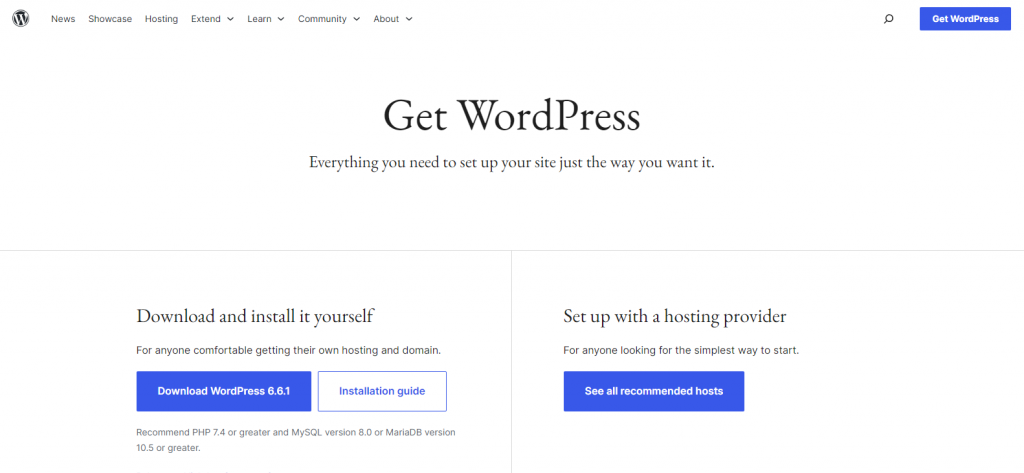
Use the File Manager in your control panel or some FTP client like FileZilla to upload the WordPress files to the desired directory on the server (usually the root directory or a subfolder).
5. Configure WordPress:
- Rename The Configuration file: Find the wp-config-sample.php file in the WordPress directory and rename it to wp-config.php.
- Edit The WP-configure.PHP: Open the file and enter the database name, database user, and password. Individuals need to set the database host (usually the local host.)
// Sample database configuration
define('DB_NAME', 'your-database-name');
define('DB_USER', 'your-database-user');
define('DB_PASSWORD', 'your-password');
define('DB_HOST', 'localhost');6. Run the installation:
- Access Your Website: Open your web browser and go to the domain name “http:// your domain.com.”
- Follow The WordPress Installation Wizard: You will be asked to select a language and fill in details like the site title, username, password, and email.
7. Finalize Setup:
- Complete The Installation: When the step is complete, see a success message.
- Login To WordPress: Use the username and password you created to access the WordPress admin dashboard.
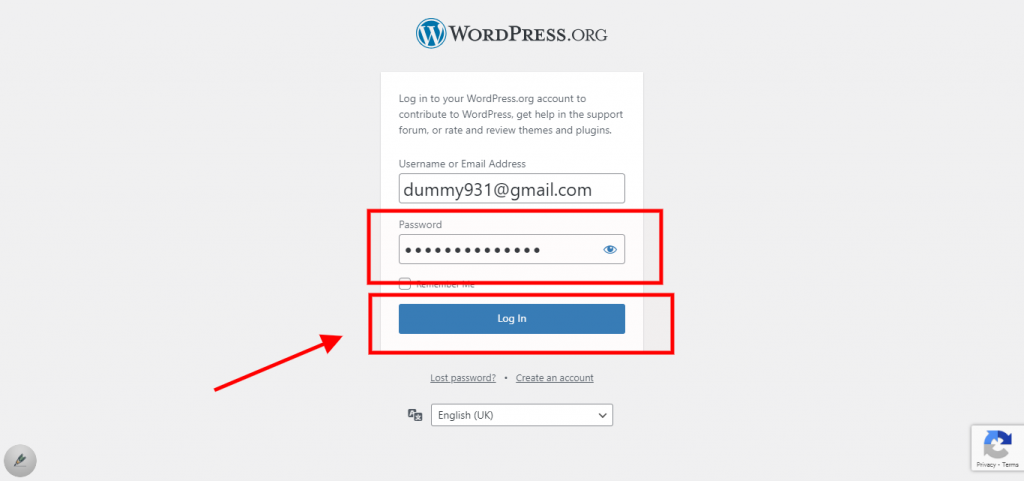
Additional Tips:
- Security: Consider using additional security measures like setting up SSL (HTTPS) and installing security plugins.
- BackUps: Regularly backup your WordPress site and database to prevent data loss.
- UpDates: Keep WordPress, plugins, and themes updated to the latest version for security and performance.
These step-by-step instructions for running WordPress on a VPS can vary slightly depending on the hosting provider and the specific tools they offer.
How To Install WordPress On A VPS Manually
To install WordPress on a VPS manually using cpanel are as follows:
1. Upload WordPress To VPS:
- First, you must download the latest WordPress version from official WordPress.
- Now, upload a Zip file to install WordPress.
- Access the cPanel account to start the installation process. Remember that individuals need to begin cPanel if they recently purchased a plan.
- Alternatively, upload these files using programs like CyberDuck, WinSCP, Bitkinex, etc.
- The cPanel file manager tool is a good option, but use whatever suits the individual best.
- Log in to the CPanel account and press the file manager option.
- Now proceed to the public-html directory and press on the same.
- Create a website folder when doing this first. Ignore this step if you already created a folder.
- Now, press on the folder option.
- Name the folder and open it. Click on the upload option.
- Press on the called-select file & upload the zip file downloaded initially.
- When the zip file is fully uploaded, click on the link at the bottom, which says to go back to “home/new“. This directs you to the file directory.
- While reaching the previous page, click reload. You will see that the zip file has been uploaded. Choose the zip file and press the extract option.
- Now, a popup will be shown on the screen asking for confirmation of the extract location. Be careful when choosing the exact location. After selecting the proper location, click on the extract file option.
Now, the file directory has WordPress. Deleting a zip file from the directory is secure at this point.
2. Move the WordPress File To The Root Directory:
You have the WordPress file, but the mission is far from over. Please move it to the correct location.
- Access the WordPress folder and select all the required files inside.
- Using the move option, move all files into the “public_HTML” directory.
- Click on the move files option after selecting the correct location.
3. Create A Fresh Database:
It is time to create a fresh database after moving WordPress files to the root directory. Go to cPanel and press on the MySQL Database option in the wizard. This is mandatory for naming databases.
- Choose a name like WP2021 or something like this to remember so you can complete the following steps.
- After naming the database, click on the button for the next step.
- Then, create a username and password for the database.
- After these steps, click on the Create user button.
- The next step is to select the privileges you want for an account. Then press on option-all the privileges followed by button-next step.
- So, The database is successfully created.
Write down the database name, username, and password for each individual who needs to connect WordPress to the database.
4. Edit The WP-Config-Sample.PHP File:
After successfully creating a fresh database, how do you edit the wp-config-sample.php file? Access the public-html directory and choose the wp-config-sample-php file. Press the public-html directory and select the wp-config-sample-php file. Now press on the file and select the edit option.
- A popup will appear on the screen, providing the option to “download, view, edit, and so on.” To continue, press the edit button.
A. First, Locate
Define (DB-NAME,database-name-here): Then replace “database-name-here” with the name of your database.
B. Locate
Define (DB-USER-username-here): Now, replace the “username-here” with the username you created.
C. Finally, Locate:
Define (DB-PASSWORD-password-here): Replace the “password-here” with the password you created.
- After locating and replacing everything, bring up the last hurdle. Copy and paste a fresh set of all the salt keys from the WordPress API. Access the salt key generator and copy all content.
- Now, replace salt critical lines in the WP-config-sample.php file with content copied from the salt key generator and save changes.
- Close the file and rename it to wp-config.php.
5. Install WordPress:
- You took all the preliminary steps to install WordPress on VPS.
- Pat yourself on the back! After all your hard work, visit the website and install WordPress.
- Visit “website.com/wp-admin/install.php” to do the needful.
- If you want to locate the WordPress files elsewhere, for example, at “yourwebsite.com/wordpress/wp-admin/install.php“, follow the appropriate steps.
Congratulations—you have successfully installed WordPress! Installing WordPress on a VPS is not easy, but it is worth it. Using WordPress on a VPS offers many benefits for web performance and ranking oversight.
This is all you need to install WordPress manually on A VPS. To optimize VPS for WordPress, consider the following steps:
- Use a Caching Plugin: To improve loading times, install a caching plugin, such as W3 Total Cache or WP Super-Cache.
- Optimize Images: Use an image optimization plugin to optimize images for WordPress and reduce file size without losing quality.
- Use A Content Delivery Network: Implement CDN to distribute website content globally and reduce latency.
- Enable GZIP compression: Enables GZIP compression to improve load times and reduce the size of web pages.
- Keep software updated: Regularly update WordPress themes, plugins, and server software to ensure optimal performance and security.
How To Install WordPress On A VPS Manually Through CWP
Let’s learn step by step how to install WordPress on a VPS manually on CWP.
- Open your CWP panel and create a new account.
- Create a MYSQL database. First, find SQL services, choose MYSQL manager, and then hit Create Database and User.
- Obtain SSH to access the servers and run the following command:
cd /home/username/public_html
wget https://wordpress.org/latest.tar.gz
tar xvzf latest.tar.gz
rm -rf wordpress
chown -R USERNAME:USERNAME .After WordPress VPS hosting installation, visit the domain name in any browser and configure it.
- Choose your language.
- Insert database detail created during the step.
- Fill out all the required information and then hit the button to install WordPress.
- Post-installation, log into the WordPress admin section.
Now, this is all, install WordPress manually on VPS through CPW. To install WordPress on a virtual server, follow these steps:
- Set Up Your Environment: Install the above server (Apache or nginx) and a top database server (MySQL, MariaDB, or PHP).
- Download WordPress: Obtain the latest version of WordPress from the official website.
- Configure The Database: Create a new database setup and user for WordPress.
- Configure WordPress: Edit the wp-config.php file with your database details.
- Install WordPress: Open a web browser and complete the WordPress installation when navigating to the server IP address and domain.
Best Virtualization For WordPress
When hosting WordPress VPS, selecting the right virtualization technology is essential to ensure optimal performance, scalability, and manageability. Virtualization allows multiple virtual machines (VMs) to run a single physical server, each with its own resources and operating system. This enables efficient use of server resources and gives flexibility in managing workloads.
To install WordPress on an online server, individuals have to choose a hosting provider that offers VPS or shared hosting, then access the server using a hosting control panel or SSH and set up the server environment to ensure that the server has a web server, database server, and PHP installed. Download and upload WordPress on the server via FTP of the hosting file manager. Then, create a database using the hosting control panel or command line, configure the WordPress wp-config.php file with database information, and run the installation by opening the web browser and navigating to the domain.
These are some of the best virtualization options for hosting WordPress, each with unique benefits and drawbacks that will help you make an informed decision.
1. KVM (Kernel-Based Virtual Machine):
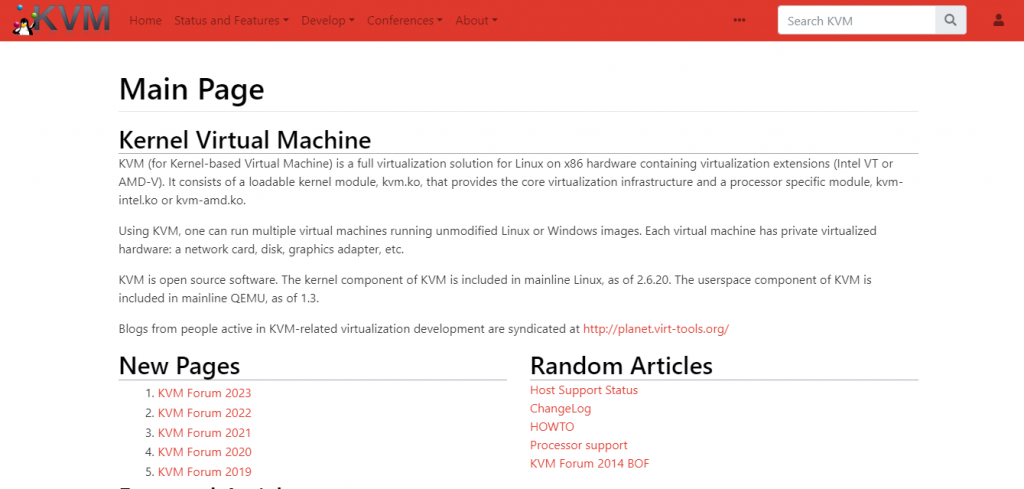
KVM is a popular open-source virtualization technology that turns the Linux kernel into a hypervisor. It is used for its robustness and efficiency, allowing multiple isolated guest VMs to run on a single physical server.
A. KVM Virtualization For WordPress Benefits:
It offers a lot of virtualization benefits. Some top are as follows:
- Performance: KVM provides near-native performance because it integrates directly with the Linux Kernel. It takes advantage of hardware virtualization features offered by modern CPUs, resulting in efficient resource utilization.
- Flexibility: KVM supports various guest operating systems, including Linux, Windows, and BSD variants.
- Scalability: KVM is a quickly scalable resource (CPU, RAM) allocated to each VM, making it suitable for WordPress sites with variable traffic.
B. KVM Virtualization For WordPress Drawbacks:
- Complexity: A good understanding of Linux system administration is required to set up and manage it.
- Resource Overhead: Each VM runs in its own OS instance, which can lead to higher resource consumption compared to container-based solutions.
2. XEN:
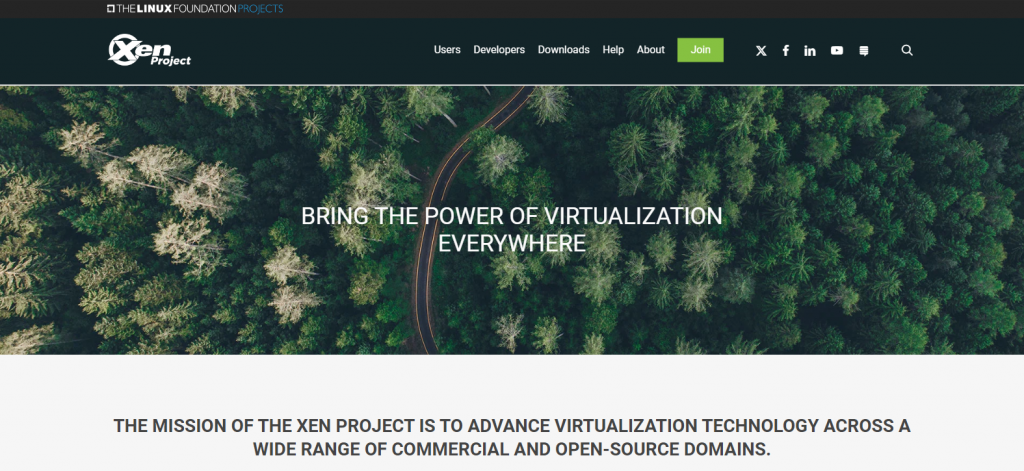
Xen is an open-source hypervisor offering modes such as organization and hardware-assisted visualization. It is known for its robust stability and is used in large-scale cloud environments like Amazon Web Services (AWS).
A. XEN Virtualization For WordPress Benefits:
It offers a lot of virtualization benefits. Some top are as follows:
- Mature Technology: Xen virtualization for WordPress has been around for years and is better tested in many production environments.
- High Performance: Support both paravirtualization and full virtualization, allowing performance optimization for different use cases.
- Security: Strong isolation between VMs, with support for security-enhanced features.
B. XEN Virtualization For WordPress Drawbacks:
- Complex Setup: Similar to KVM, it requires significant expertise to deploy and manage.
- Compatibility: While it supports many operating systems, some specific features may only be available for some guest OS types.
3. VMware vSphere/ESXI:
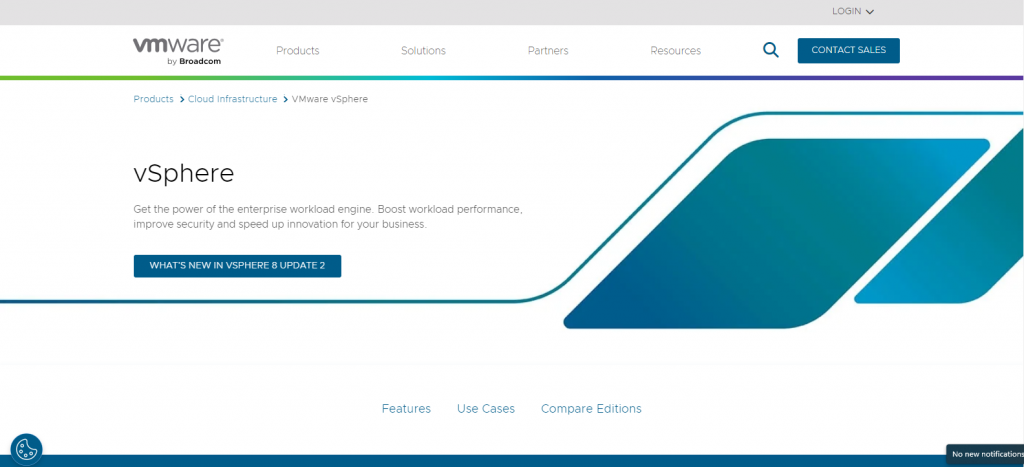
VMware Vsphere ESXI hypervisor component ESXI is a commercial virtualization solution renowned for its robust reliability and feature-rich ecosystem; it is widely used in enterprise environments.
A. VMware VSphere/ESXI Virtualization For WordPress Benefits:
- Robust Feature Set: VMware Vsphere/ESXI Offers advanced features like Vmotion, distributed resources scheduler (RDS), and high availability (HA), which are beneficial for maintaining uptime.
- Ease of Use: VMware VSphere/ESXI’s user-friendly interface makes it accessible even to those with limited virtualization experience.
- Integration: VMware VSphere/ESXI works well with various third-party tools and strongly supports Windows and LINUX guest operating systems.
B. VMware VSphere/ESXI Virtualization For WordPress Drawbacks:
- Cost: VMware VSphere/ESXI as a commercial product can be expensive, especially for mini businesses or individual developers.
- Vendor Lock-In: Reliance on VMware tools and infrastructure can make migration to other platforms more challenging.
4. Docker:
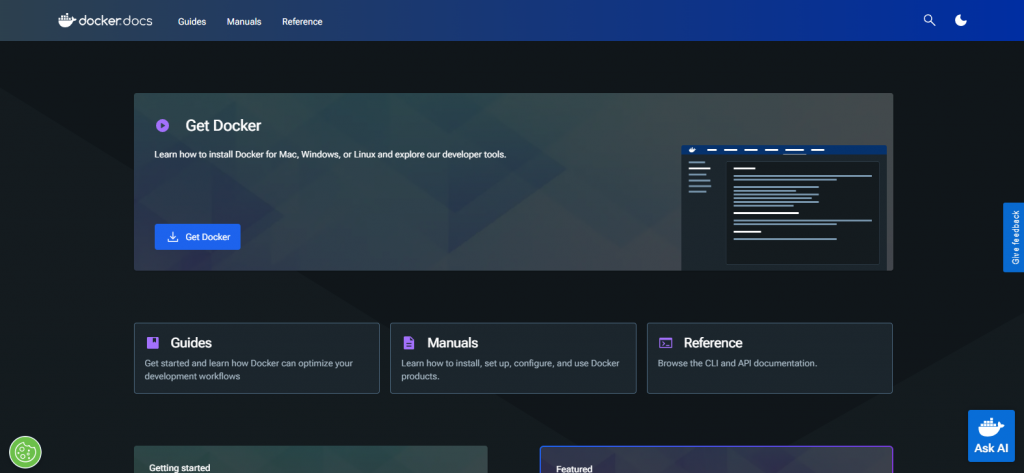
Docker is a containerization platform that packages applications and their dependencies into containers. Containers share the host OS kernel, making them lightweight.
A. Docker Virtualization For WordPress Benefits:
- Efficiency: Containers are lighter than VMS because they share the host OS kernel, resulting in lower overhead and faster startup times.
- Portability: Containers can run consistently across different environments, making them a priority for development and production.
- Scalability: The application is easily scalable by developing multiple container instances, perfect for handling variable WordPress traffic.
B. Docker Virtualization For WordPress Drawbacks:
- Security: Containers offer less isolation than VMs, which can be a concern for multi-tenant environments.
- Complex Networking: Setting up network configurations and storage for containers can be complex VMs.
5. OpenVZ:
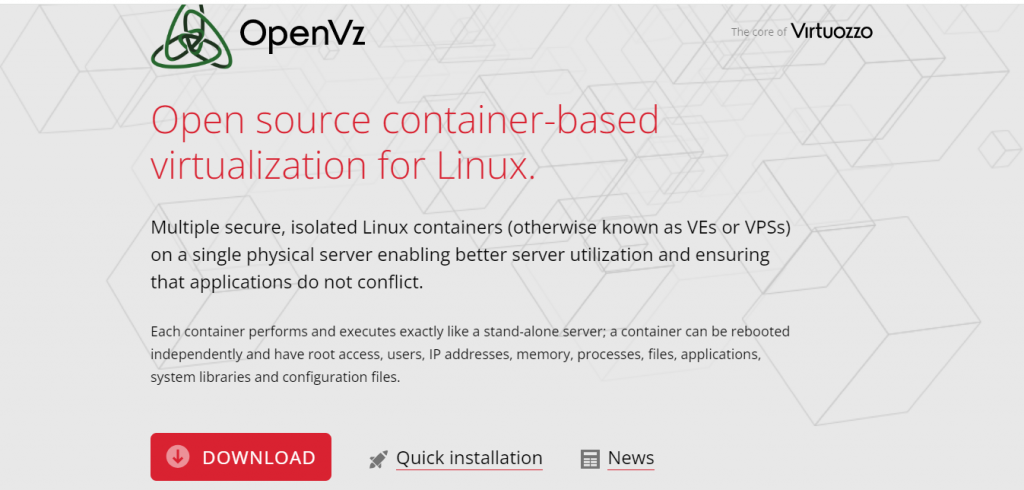
OpenVZ is a container-based virtualization solution for Linux. It allows many secure and isolated Linux containers to run on a single physical server.
A. OpenVZ Virtualization For WordPress Benefits:
- Efficiency: Like Docker, the container shares the host OS kernel, making it lightweight and fast.
- Resource Management: Offer dynamic resource allocation, enabling efficient use of server resources.
- Ease Of Use: Simple to set up and manage, suitable for hosting a wide range of WordPress instances.
B. Openvz Virtualization For WordPress Drawbacks:
- Linux Only: It only supports Linux guest operating systems, which might not be suitable if you need to run other OS types.
Conclusion
Using a VPS is a significant step up if you have only experienced shared hosting before. Some reputable web hosts keep the experience simple. If you prefer not to use command lines for customization or repairs, many providers offer user-friendly tools to assist you.
There are two methods for setting up WordPress on a VPS. Some VPS services offer a click setup option for popular platforms such as WordPress, or you can do so manually. The latter method demands you to be comfortable using the command line, but knowing the exact details of the steps to follow is easy. Have some questions about how to install WordPress on VPS hosting? Ask in the comment section below.
Ready to streamline your website management? Explore our cPanel VPS Hosting services now!

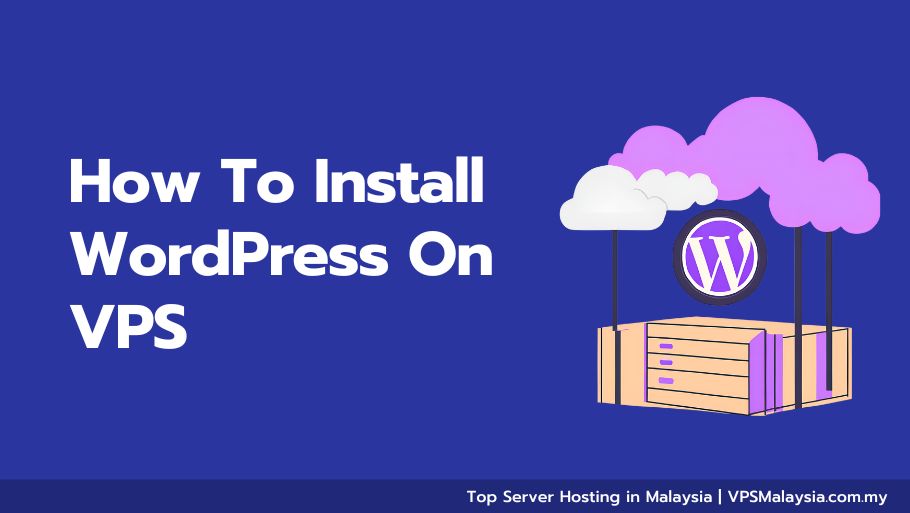









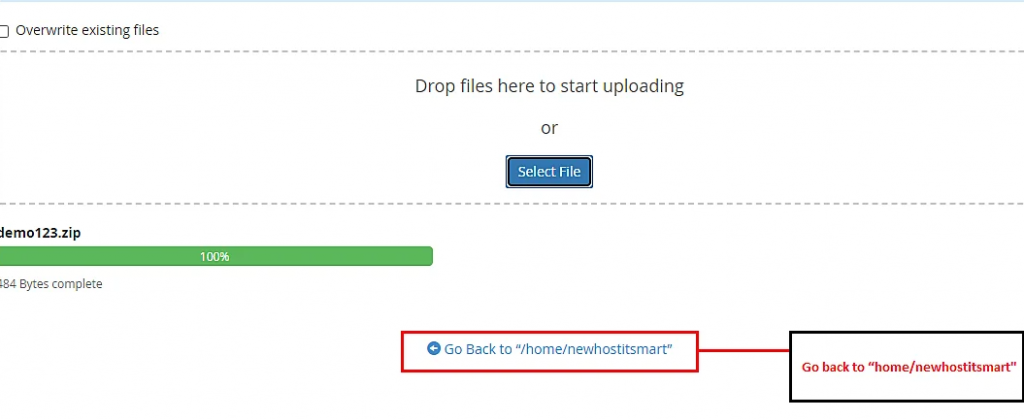














Leave a Reply